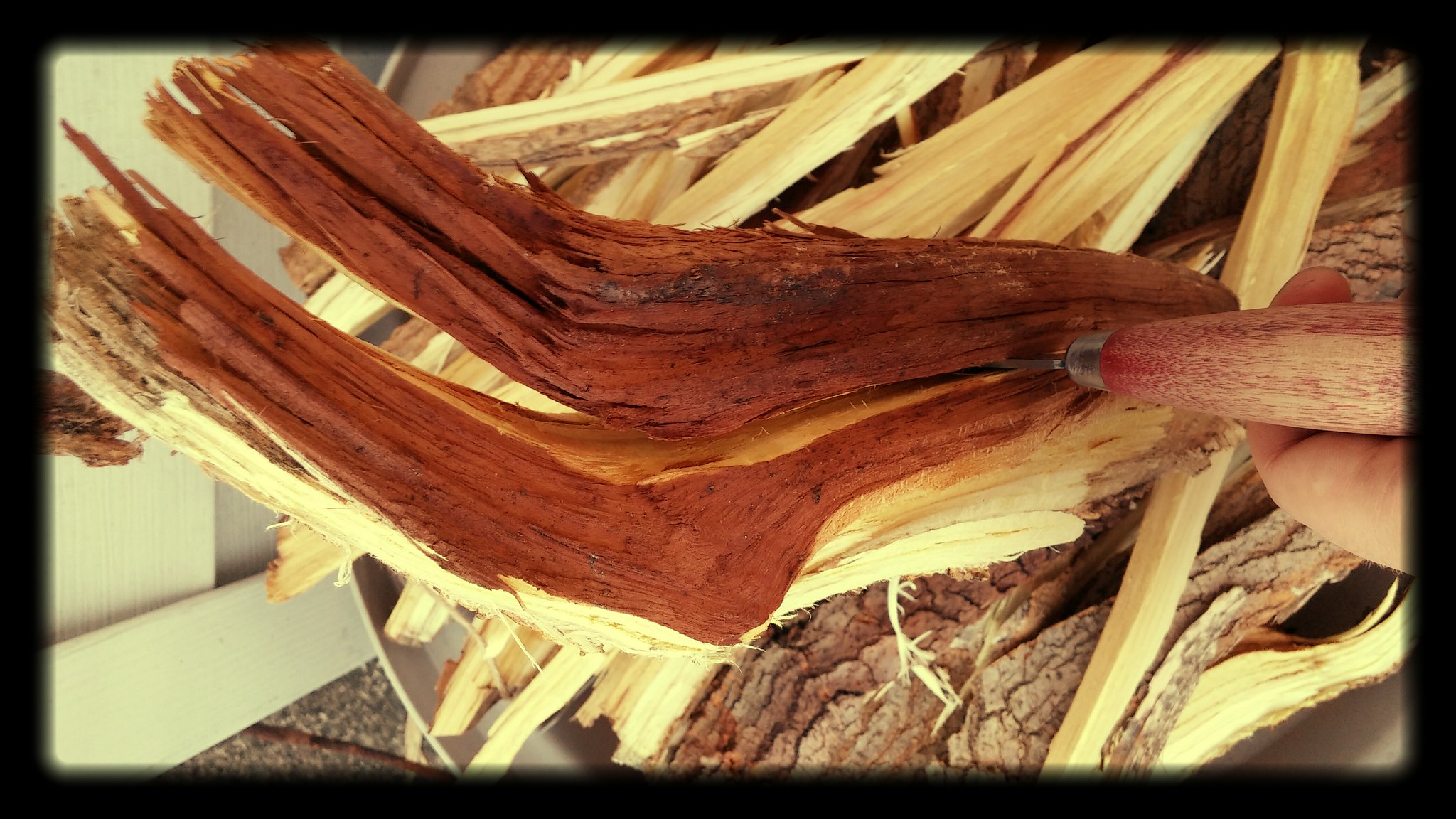Well, what is an sak, 5/64" tapered down to 1/16"? Looks something like that. That still leaves two measurements until 1/8", and as far as I know 3/32" and 7/64" have been the most common Mora sizes for a long time. I think only the new Mora Survival Black, or whatever it is, is 1/8". And of course the Skookum was made in this era of thick knives, so relatively speaking 1/8" and 5/32" knives are quite thick compared to the Moras.
For Kochanski, the condition of a prybar, in terms of a survival knife, is met when you can pound the knife into a tree an inch and a half and stand on the handle. It may be an arbitrary test, but that's what it is; maybe it's based on the weight of the individual. Either way the Mora passes the test.
The idea was that it was a full-tang knife, and this concept of 'full-tang' has been bastardised as well. Full-tang simply meant all the way to the end of the handle, and a hidden tang with a peened end met this condition. Seems the Mears knife began this necessity of a full non-hidden tang, and ever since the knives have been a cross between the 1/4" wrecking bars and the 1/8" prybars. Most sacrifice finesse cutting for the durability, even though many have shown that knives under 1/8" can easily handle being used as a prybar.
It is preference, to a certain degree, I was just pointing out that the ideal survival knife in Kochanski's writings is not a set standard of lengths and thickness. It is a general set of rules, or a guide, and the Skookum is just one interpretation. The rush for the sales door when an expert issues a standardised knife is what has led to so many people swearing by knives that are mediocre at best, and their becoming a standard to follow. The Skookum was never given such publicity as the other expert knives were, but still we see how it becomes a new standard and people don't think critically about their own needs, they just buy the standard issue.
Personally, I see batonning as little more than a last resort, and in those circumstances it is only a requirement of the knife to start the split in the wood. And given the rarity of such an occurrence it seems a huge mistake to sacrifice cutting performance for a task which will only ever take up a minuscule amount of your skill and efforts. A 3" to 3-3/4" knife, 5/64" to 3/32" thick, is more than enough in my estimation, as it will do every job better apart from the few survival tasks which may never arise.
SAK and another knife is fine, but the sak can be lost much easier than a belt or neck knife. It is also a bit more of a risk in a survival situation - it can close on a finger or break.



